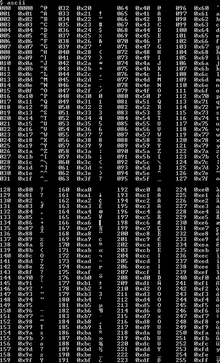
Back Genişləndirilmiş ASCII yığını Azerbaijani ASCII extendido Spanish ASCII étendu French ASCII esteso Italian 拡張ASCII Japanese Utvida ASCII NN Utökad ASCII Swedish ASCII mở rộng Vietnamese EASCII Chinese

Extended ASCII is a repertoire of character encodings that include (most of) the original 96 ASCII character set, plus up to 128 additional characters. There is no formal definition of "extended ASCII", and even use of the term is sometimes criticized,[1][2][3] because it can be mistakenly interpreted to mean that the American National Standards Institute (ANSI) had updated its ANSI X3.4-1986 standard to include more characters, or that the term identifies a single unambiguous encoding, neither of which is the case.
The ISO standard ISO 8859 was the first international standard to formalise a (limited) expansion of the ASCII character set: of the many language variants it encoded, ISO 8859-1 ("ISO Latin 1") – which supports most Western European languages – is best known in the West. There are many other extended ASCII encodings (more than 220 DOS and Windows codepages). EBCDIC ("the other" major character code) likewise developed many extended variants (more than 186 EBCDIC codepages) over the decades.
All modern operating systems use Unicode which supports thousands of characters. However, extended ASCII remains important in the history of computing, and supporting multiple extended ASCII character sets required software to be written in ways that made it much easier to support the UTF-8 encoding method later on.
- ^ Benjamin Riefenstahl (26 Feb 2001). "Re: Cygwin Termcap information involving extended ascii charicters". cygwin (Mailing list). Archived from the original on 11 July 2013. Retrieved 2 December 2012.
- ^ S. Wolicki (Mar 23, 2012). "Print Extended ASCII Codes in sql*plus". Retrieved May 17, 2022.
- ^ Mark J. Reed (March 28, 2004). "vim: how to type extended-ascii?". Newsgroup: comp.editors. Retrieved May 17, 2022.
© MMXXIII Rich X Search. We shall prevail. All rights reserved. Rich X Search